As the decade comes to an end, we reflect on events that brought together international aid workers, inspired innovative solutions to complex challenges, and showed the amazing capacity for resilience humans have in the face of disasters.
2010: Haiti earthquake
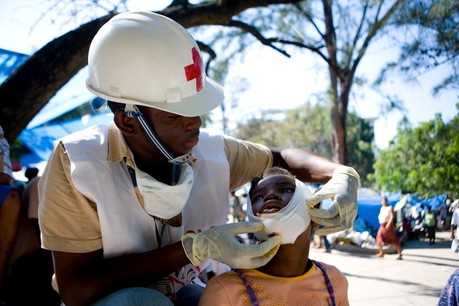
On January 12, Haiti was hit by a devastating earthquake and powerful aftershocks. Buildings collapsed and infrastructure like roads were destroyed or damaged; hundreds of thousands of people were impacted. In the earliest days, Canadian Red Cross sent funds, supplies, and aid workers to join the international response.
In the following years, Haiti faced more challenges, including a cholera outbreak and several hurricanes. Canadian Red Cross has continued to work in Haiti, and has worked with the Haitian Red Cross to help them be better prepared to respond to future disasters.
Read: Health in Haiti
2011: Japan earthquake and Asia-Pacific tsunami
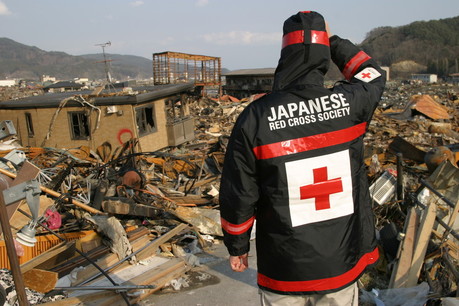
On March 11, a 9.0 magnitude earthquake struck Japan. The earthquake triggered tsunami warnings across the Pacific coastline. Thousands were killed, injured, or missing. The earthquake and tsunami wave also impacted three Fukushima Daiichi reactors, causing a nuclear accident. The Japanese Red Cross responded by delivering essential aid items, providing medical and mental health care to thousands of individuals, and providing shelter.
Thanks to the generous support of Canadians, we were able to support the Japanese Red Cross as they responded to this disaster with financial assistance.
Read: The Red Cross in action in Japan
2012: Hurricane Sandy
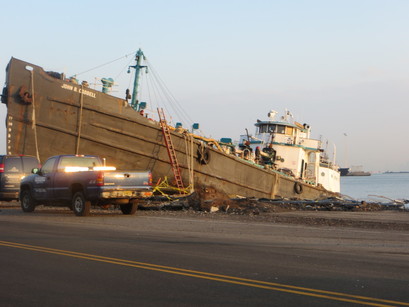
In October, members of the Canadian Red Cross joined the American Red Cross for the response following Hurricane Sandy. The storm caused power outages, flooding, fallen trees and debris. Canadian and American Red Cross have a close relationship, and it’s common to spot an American volunteer helping out in Canada during a disaster or vice versa.
In Photos: Canadian Red Cross assists with Hurricane Sandy response
As the conflict in Syria intensified, more and more people became displaced in 2012. Red Cross and Red Crescent have been responding to the needs of those fleeing violence since the conflict began, throughout the decade the Canadian Red Cross has helped.
2013: Typhoon Haiyan
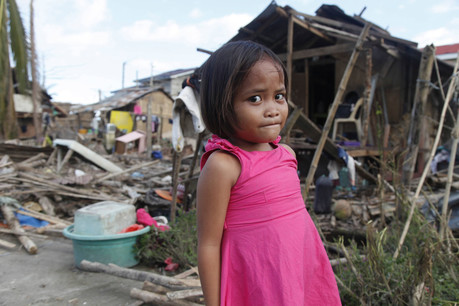
On November 8, Typhoon Haiyan, one of the strongest typhoons to ever make landfall, caused catastrophic damage in the Philippines. In the immediate aftermath, Canadian Red Cross contributed funds to help provide critical aid.
The healthcare system was left vulnerable after the damaged or destroyed hospitals. We rapidly sent our field hospital to the heavily-impacted town of Ormoc. Here, Canadian Red Cross aid workers provided essential health services, including surgical, pharmacy, maternity care, and psychosocial support. In four months, the hospital team treated over 1,000 patients, performed 114 surgeries, and delivered 418 babies! Then, the field hospital was handed over to the Philippine Red Cross, which gives them the capacity to deliver basic health care in the event of a future emergency.
Read: Emergency field hospital handed over to the Philippine Red Cross
In June, southern Alberta experienced terrible flooding that damaged houses, businesses and farmland. Recovery after a disaster of this magnitude can take months, and in many cases, years. Canadian Red Cross worked to provide long-term help to those in need, thanks to generous donations totalling $45 million. Over time, 9,459 families were assisted, 229 homes repaired and rehabilitated, 104 community initiatives funded, and 40 small business owners received support.
On the night of July 6, a runaway train carrying millions of litres of petroleum skipped the tracks in downtown Lac-Mégantic. The result was devastating. 47 people lost their lives, 31 children lost one or both parents, entire buildings were leveled to the ground.
Canadian Red Cross teams quickly responded to ensure that the needs of evacuees were met. In the first 6 months, nearly 600 volunteers from across Quebec were mobilized, including 148 people from the Lac-Mégantic area. Over five years, the Canadian Red Cross supported over 3,000 people, including 286 students and workers who lost jobs, 254 self-employed workers and business owners, and 114 grieving families.
2014: West Africa Ebola outbreak
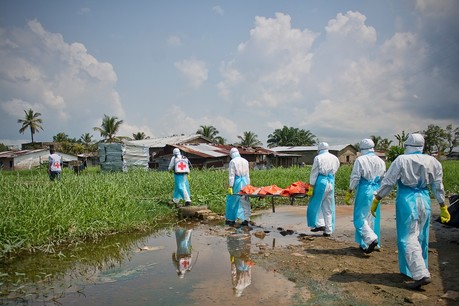
In March the first cases of Ebola were confirmed in Guinea. At the time, it was the largest Ebola outbreak in history, both in terms of the amount of people impacted and the geographical spread. The result was one of the most challenging global public health disasters in recent times.
National Red Cross Societies in the affected countries led the response, with support from other partner societies like the Canadian Red Cross. This response was complex, requiring everything from medical care, to education, to contact tracing, to safe and dignified burials and psychosocial support. We sent aid workers and helped to establish an Ebola Treatment Centre in Sierra Leone.
Read: Staying safe while responding to the Ebola outbreak
2015: Nepal earthquake
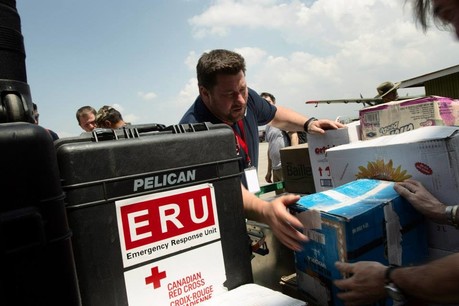
On April two massive earthquakes hit Nepal, killing or injuring thousands of people. The earthquake destroyed homes, damaged infrastructure, and devastated livelihoods. Many communities in Nepal are remote, and the earthquake made it extremely difficult to reach these vulnerable areas.
Canadian Red Cross sent our emergency field hospital and a team of aid workers to the hard-hit community of Dhunche. Red Cross doctors and nurses worked tirelessly to treat thousands who needed care. Mobile clinics also travelled to remote villages, where they were able to reach people who could not travel to the main field hospital. The Red Cross team trained Nepalese health workers to take over the field hospital, and in August the hospital was handed over to local health authorities.
Watch: Red Crosser films rockslide as new earthquake strikes Nepal
Beginning in 2013, Red Cross supported thousands of people in Saskatchewan forced by wildfires to leave their homes. Over 280 Canadian Red Cross volunteers and staff from the Prairies and elsewhere in Canada were mobilized to help.
2016: Fort McMurray fire
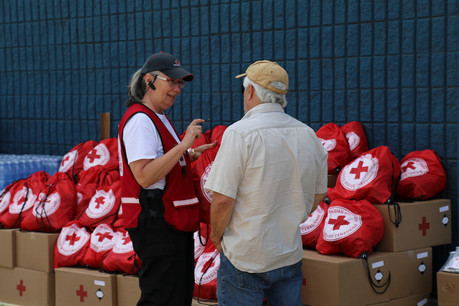
In 2016, a massive wildfire known as “The Beast” forced the evacuation of Fort McMurray and surrounding communities. It was one of the largest and most costly natural disasters in Alberta’s history, the impacts of which are still felt today. Canadians were quick to respond with donations and through volunteering.
People evacuated across the country, which presented a challenge on how we could deliver aid. The solution came in the form of electronic fund transfers, allowing us to send money to registered evacuees no matter where they were staying. Fund transfers help empower people impacted by disasters because it allows them to purchase the items they, and their families, need the most.
Read: Flowers amid the rubble: A Fort McMurray resident gives back by volunteering
Also in 2016, thousands of refugees from Syria arrived in Canada. We helped welcome families to their new home by helping to provide essential items like winter boots, snacks, temporary lodging, transportation, and programs for children. Red Cross also helped provide information and family reunification services.
2017: British Columbia wildfires
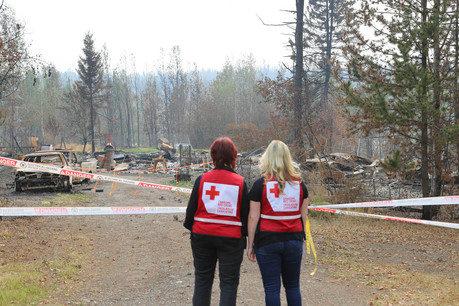
With the previous year’s fire so fresh in memory, British Columbia faced an active wildfire season with several fires forcing people to evacuate their homes throughout the province. Again, Red Cross used electronic fund transfers to help get aid to people no matter where they had evacuated. Some communities that were impacted were remote, with limited access to computers – in these cases, Red Cross teams would travel to these communities to make sure everyone got registered.
Read: No community or individual is too far
From 2017 to 2019, Canadian Red Cross supported the evacuation of residents from communities including Little Grand Rapids and Pauingassi First Nations due to wildfire smoke in the communities.
We helped those most in need such as the elderly, babies, and those with chronic respiratory problems. The response is part of an agreement between the Canadian Red Cross and the federal government to provide all disaster assistance to Manitoba First Nations.
2018: Population movement in Bangladesh
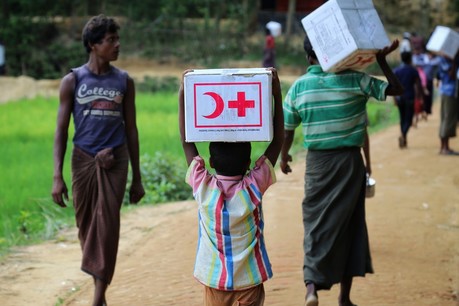
In Bangladesh, makeshift settlements and crowded camps are homes to hundreds of thousands of people who have fled violence in Myanmar’s Rakhine State. Conditions are extremely difficult, and the need for humanitarian aid is great. Canadian Red Cross, along with other Red Cross and Red Crescent societies, has been working to help provide medical care to vulnerable people throughout the camps as well as delivering food, water, shelter, mental health support and family reunification. Huge amounts of the camp population are children who arrived on their own, the Red Cross put procedures in place to protect children, especially against human trafficking and exploitation.
Read: A shoulder to cry on, an ear to listen at the Red Cross field hospital in Bangladesh
2019: Mozambique
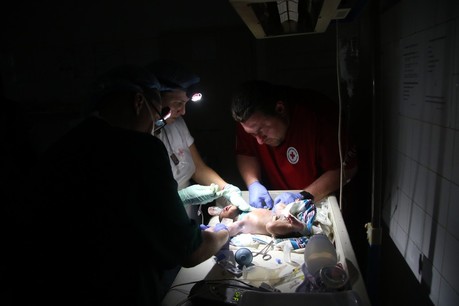
In March, Cyclone Idai made landfall in Mozambique. Canadian Red Cross responded by sending our Emergency Field Hospital and aid workers. Health risks after a disaster like a cyclone rise dramatically, because they increase the potential for waterborne diseases like cholera and malaria. Soon, the field hospital would add a special Cholera Treatment Centre to address a cholera outbreak.
This response also provided the opportunity to improve gender equality, with women labourers hired to help rebuild the damaged Nhamatanda District Hospital. From the early days of the response, we put an emphasis on Protection, Gender and Inclusion, which includes things as simple as making sure there are locks on bathroom doors, to having a special place for pregnant people who are waiting to give birth.
Read: Delivering babies in near darkness in Mozambique
These are just a few of the transformative events that took place over the last decade. Every day, the Red Cross responds to disasters and emergencies. We are so proud of everything we have accomplished, and we couldn’t have done it without the continued generosity of Canadians who donate, our dedicated staff and volunteers, and partners. We are starting 2020 ready to respond when and where we are needed.
Photo credits: Talia Frenkel, American Red Cross, Japan Red Cross Society, Roxanne Gularte, Patrick Fuller, IFRC, Victor Lacken, Finnish Red Cross, Canadian Red Cross, Stephanie Murphy, Angela Hill

